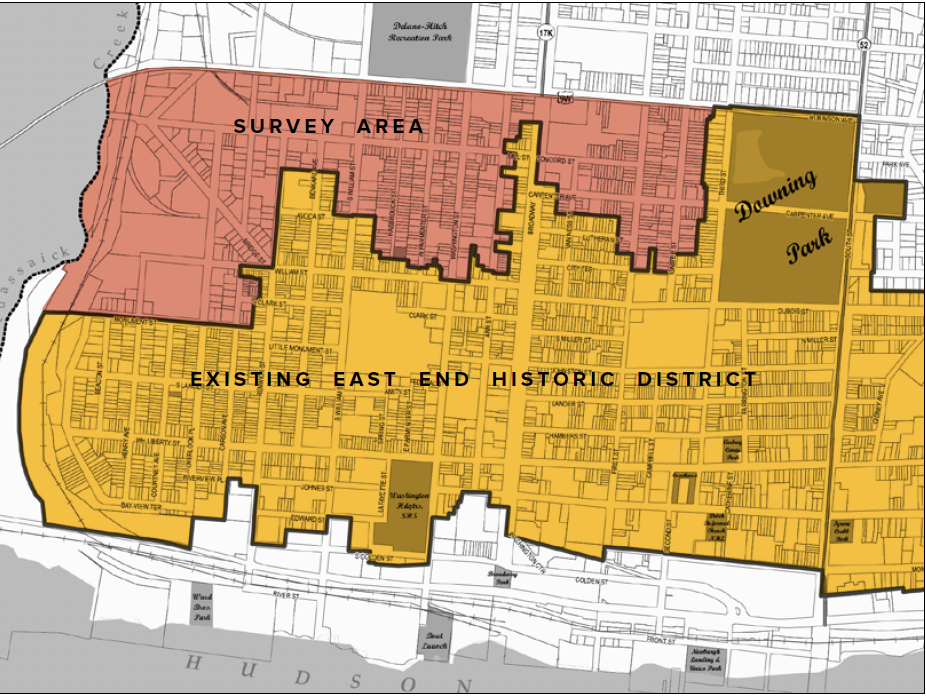Gaps in the Historic District
In 2023, a cultural resource survey re-examined the boundaries of the East End Historic District, focusing on 529 buildings that reflect over 200 years of our city's immigrant history. Preservationist Marissa Marvelli will share her research findings and ask YOU what are the next steps?
To learn more about the history and buildings in the surveyed area, there’s an optional guided walking tour at 12pm.
Newburgh Reconnaissance Level Historic Resources Survey






When the East End Historic District was listed to the National Register of Historic Places in 1985, it was widely heralded as a positive culmination to what had otherwise been a demoralizing period of shortsighted urban renewal destruction. While this view still largely holds true, there’s a growing recognition that the 1985 nomination tells only part of the story of Newburgh’s history and significance—that of its early development and architectural excellence.
The city’s rich social history is largely absent from the narrative, particularly as it relates to industry, labor, migration, and specifically, the Black community. A survey of the district boundaries today reveals a clear bias for buildings with definable styles and masonry construction.
Questions for the Community
IS THIS NEIGHBORHOOD SPECIAL? DOES THIS PLACE MATTER?
WHAT THREE WORDS BEST DESCRIBE THIS NEIGHBORHOOD? THIS BLOCK?
WHAT HAS BEEN LOST? WHAT HAS CHANGED?
WHAT SHOULD BE KEPT? WHAT SHOULD BE PROTECTED?
WHAT ARE THE TOOLS WE HAVE TO PRESERVE THESE HISTORIES?
Meanwhile, adjacent blocks with humbler urban vernacular houses, such as those on Carter and Carpenter Streets north of Broadway and West Parmenter and Washington streets south of Broadway, were largely omitted. Historically these blocks were developed for Newburgh’s growing immigrant and Black populations in the mid- and late nineteenth century.
For many families, these houses are the first physical representation of their economic advancement. The urban renewal destruction of Newburgh’s older waterfront area heightens the significance of these blocks as surviving historic working-class neighborhoods.
EVENT DETAILS
Sunday, October 6 at 1pm
Optional guided tour at 12pm! RSVP if you plan to attend to archtobernewburgh@gmail.com.
Festival Hub at 113 Liberty Street
AIA Credit offered
If you’d like Spanish translation services for this event, please let us know by emailing thefullertoncenter@gmail.com.
Si deseas servicios de traducción al español para este evento, por favor háznoslo saber enviando un correo electrónico a thefullertoncenter@gmail.com
This project was funded by Preservation League of New York State Preserve New York grant. This event is organized in partnership with AIA Westchester + Hudson Valley and presented as part of @Archtober, NYC's annual architecture and design festival.
